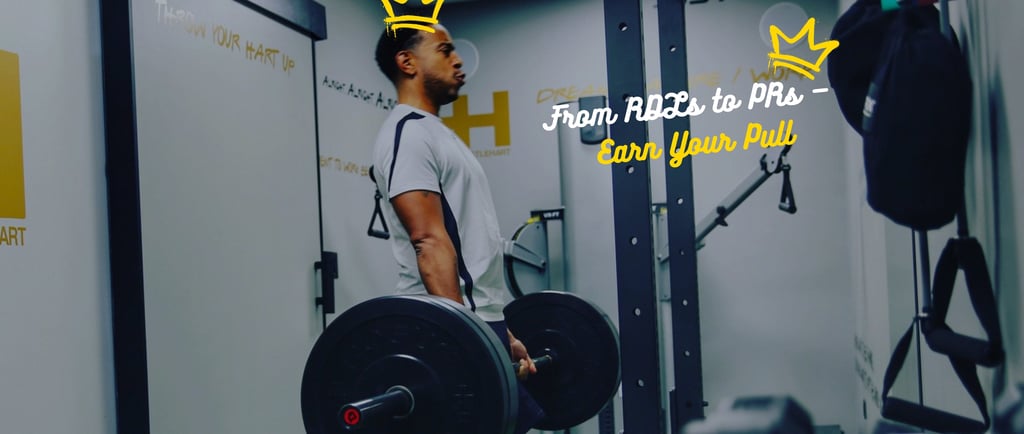Deadlift Progressions: Build the Pattern Before You Pull Heavy
Deadlifting isn’t just about pulling big numbers — it’s about building strength that carries over to real life. In this quick guide, we break down how to progress your deadlift safely, master the hip hinge, and train in a way that supports long-term performance, posture, and injury prevention.
DEADLIFTSTRENGTH TRAININGWEIGHT TRAINING
dj miss kittie
5/24/20252 min read


Deadlift Progressions: Build the Pattern Before You Pull Heavy
The deadlift isn’t just about brute strength — it’s about moving better in life and performing longer in your career. Whether you're lifting speakers, traveling with gear, or just trying to stay pain-free — learning the hip hinge properly is key.
Here’s how to progress it safely, with purpose:
Step 1: Cable Pull-Through
The Foundation
• Teaches the hip hinge with zero spinal loading
• Adds a counterbalance to help lock in the movement
• Great for beginners, rehab, or warm-ups
Real Life / Artist Benefit:
Trains the same movement pattern used to bend and lift without straining your back — like picking up a crate, adjusting gear mid-set, or even lifting a suitcase at the airport.
Step 2: Kickstand RDL
Single-Leg Stability Starter
• Builds unilateral control and glute activation
• Wider base gives stability but challenges your hips
• Helps correct imbalances and train clean movement
Real Life / Artist Benefit:
Improves balance and hip control — useful for dancers, stage performers, or DJs who shift weight side to side while standing for long sets.
Step 3: Romanian Deadlift (RDL)
The Isolator
• Trains the hip-dominant portion of the lift
• Minimal knee bend = max hamstring engagement
• Reinforces proper hinge form without the complexity of pulling from the floor
Real Life / Artist Benefit:
Strengthens the posterior chain (glutes + hamstrings), which protects the spine and improves posture — key for standing long hours or touring.
Step 4: Trap Bar Deadlift
The Hybrid Hitter
• Combines squat and hinge mechanics
• Neutral grip, upright torso = less spinal stress
• Perfect for learning full-body tension in a safer setup
Real Life / Artist Benefit:
Makes lifting feel natural — just like grabbing heavy bags off the ground. Great for full-body strength without overloading the lower back.
Step 5: Conventional Deadlift / Block Pulls
Getting Closer to the Floor
• Shortens the range to reduce stress on the back
• Great for refining form and gradually loading up
• Teaches you how to brace and pull with power
Real Life / Artist Benefit:
Protects your lower back while lifting things off the ground — from stage gear to groceries — and teaches safer mechanics when loading equipment.
Step 6: Deficit Deadlift / Snatch Grip / Floating DL
Advanced Variations
• Increased ROM = more demand on mobility and strength
• Floating reps = no reset, more tension
• Snatch grip = full posterior chain overload
Real Life / Artist Benefit:
Advanced options for performers or athletes needing extra power and durability — especially useful for improving posture, breath control, and long-set endurance.
Key Takeaway:
Deadlifts aren’t just for PRs — they’re for life.
The right progression trains you to move better, feel stronger, and handle the demands of both performance and day-to-day life.
Train the movement → Master the hinge → Build strength that lasts.
Deadlifting isn’t about ego. It’s about longevity.
